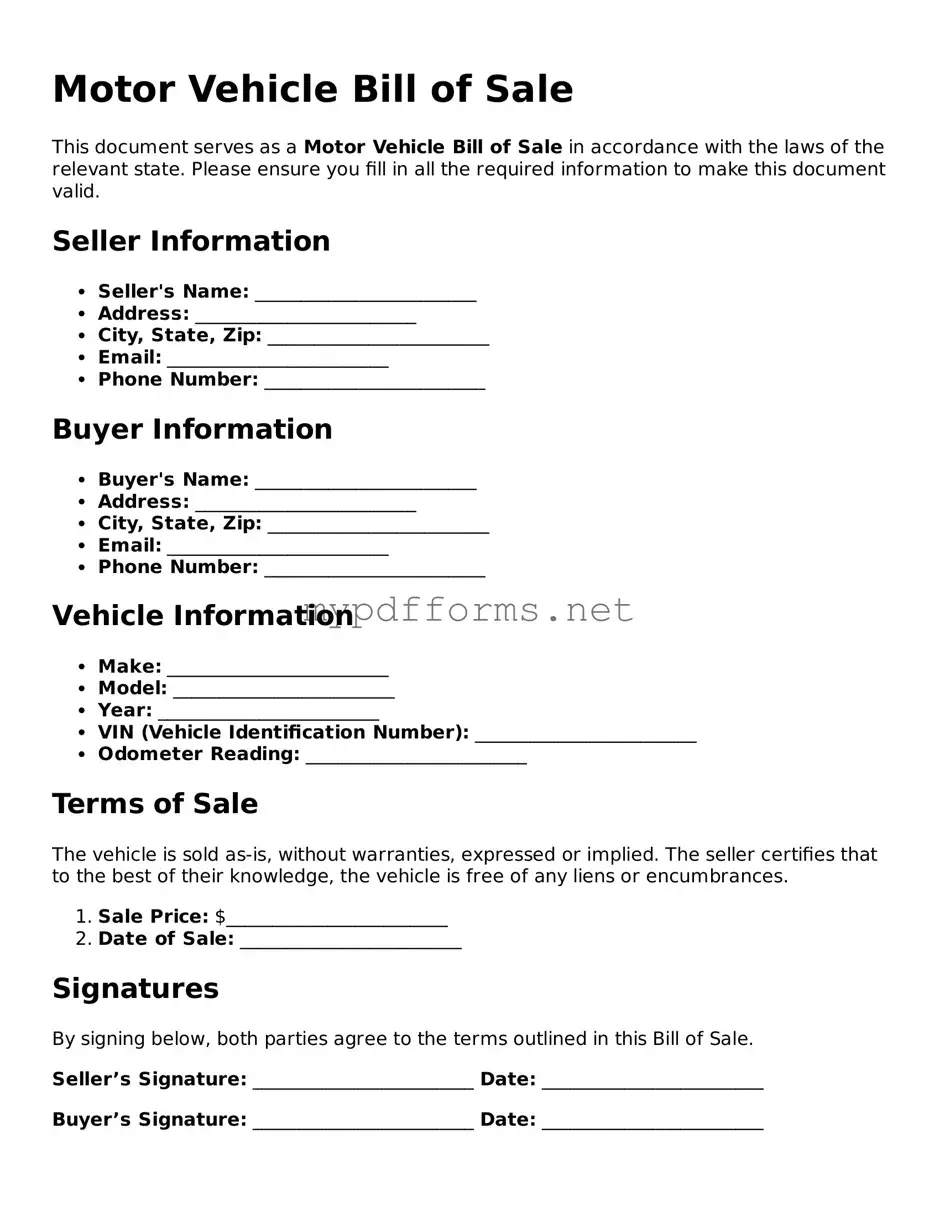The Motor Vehicle Bill of Sale form is similar to a Real Estate Bill of Sale. Both documents serve as legal proof of the transfer of ownership from one party to another. They include essential details such as the names and addresses of the buyer and seller, a description of the property being sold, and the sale price. Just as with motor vehicles, real estate transactions often require additional disclosures and may involve contingencies that must be met before the sale is finalized.
Another document akin to the Motor Vehicle Bill of Sale is the Personal Property Bill of Sale. This form is used for the sale of items that do not fall under real estate or motor vehicles, such as furniture or electronics. Like the Motor Vehicle Bill of Sale, it includes the parties' information, a description of the item sold, and the agreed-upon price. Both documents serve to protect the buyer and seller by providing a record of the transaction.
The Boat Bill of Sale shares similarities with the Motor Vehicle Bill of Sale as well. When purchasing a boat, the buyer and seller must document the transfer of ownership. This document includes similar information, such as the hull identification number, registration details, and the sale price. Just as with motor vehicles, boats can require additional paperwork for registration and titling, making a Bill of Sale essential for legal ownership transfer.
A Motorcycle Bill of Sale is also comparable to the Motor Vehicle Bill of Sale. This document is specifically designed for the sale of motorcycles and contains similar elements, such as the vehicle identification number (VIN), the names and addresses of both parties, and the purchase price. Both forms help ensure that ownership is legally transferred and can be used for registration purposes.
The ATV Bill of Sale serves a similar purpose for all-terrain vehicles. Like the Motor Vehicle Bill of Sale, it documents the sale and transfer of ownership, including details about the vehicle and the parties involved. This document is crucial for the buyer to register the ATV and for the seller to prove that they no longer own the vehicle.
The Trailer Bill of Sale is another document that mirrors the Motor Vehicle Bill of Sale. When a trailer is sold, this form captures essential details such as the trailer's VIN, the buyer and seller's information, and the sale price. Both documents are vital for legal ownership transfer and may be required for registration with state authorities.
A Lease Agreement can also be compared to the Motor Vehicle Bill of Sale, although the context differs. While a Bill of Sale signifies a transfer of ownership, a Lease Agreement outlines the terms under which one party can use another's property. Both documents require clear identification of the parties involved and the terms of the agreement, ensuring that both sides understand their rights and obligations.
If you are looking to authorize someone to manage your affairs, a reliable option is the vehicle-specific Power of Attorney form. This document streamlines the process, ensuring all necessary decisions are made promptly and legally on your behalf.
Lastly, a Gift Bill of Sale is similar in function to the Motor Vehicle Bill of Sale, though it pertains to transactions where no money changes hands. This document still provides proof of ownership transfer and includes the necessary details about the vehicle and the parties involved. Even in a gift situation, having a formal record is important for legal and tax purposes.
